 |
Course 36: Sharing Information with Parents and Other Professionals |
2.00 |
School-age children work on many important developmental tasks during their out-of-school hours. One of the important responsibilities of OST staff is to help parents stay in touch with how their children are growing and developing during program hours. In addition to parents, professionals who work with children in other settings are often interested in learning how children spend their time when they are not at home or school.
Portfolios are excellent tools for bringing children’s experiences in OST programs to life for parents during planned parent conferences. They are also valuable tools for sharing helpful information about children with other professionals. |
 |
Sharing Information with Parents and Other Professionals |
2.00 |
School-age children work on many important developmental tasks during their out-of-school hours. One of the important responsibilities of OST staff is to help parents stay in touch with how their children are growing and developing during program hours. In addition to parents, professionals who work with children in other settings are often interested in learning how children spend their time when they are not at home or school.
Portfolios are excellent tools for bringing children’s experiences in OST programs to life for parents during planned parent conferences. They are also valuable tools for sharing helpful information about children with other professionals. |
 |
Sharing Information with Parents and Other Professionals (Collection) |
2.00 |
School-age children work on many important developmental tasks during their out-of-school hours. One of the important responsibilities of OST staff is to help parents stay in touch with how their children are growing and developing during program hours. In addition to parents, professionals who work with children in other settings are often interested in learning how children spend their time when they are not at home or school.
Portfolios are excellent tools for bringing children’s experiences in OST programs to life for parents during planned parent conferences. They are also valuable tools for sharing helpful information about children with other professionals. |
 |
Developing Effective Outdoor Environments and Interest Areas: Moving Indoor Interest Areas Outside |
1.00 |
School-age children need daily opportunities to exercise, relax, and participate in a wide range of outdoor activities. The hours children spend in after school programs are often the best hours of the day for getting fresh air and enjoying the outdoors while it's still daylight. School-age programs can provide safe, secure settings where children can enjoy the outdoors. In this course, we will explore strategies for moving indoor interest areas into outdoor environments. |
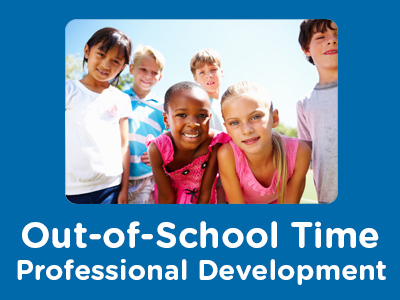 |
Developing Effective Outdoor Environments and Interest Areas: Assessing Space and Planning Activities |
1.00 |
School-age children need daily opportunities to exercise, relax, and participate in a wide range of outdoor activities. The hours children spend in after school programs are often the best hours of the day for getting fresh air and enjoying the outdoors while it's still daylight. School-age programs can provide safe, secure settings where children can enjoy the outdoors. In this course, we will explore how to assess space and plan activities in outdoor environment and interest areas. |
 |
Developing and Implementing Effective School-Age Outdoor Environments and Interest Areas |
2.00 |
School-age children need daily opportunities to exercise, relax, and participate in a wide range of outdoor activities. The hours children spend in after school programs are often the best hours of the day for getting fresh air and enjoying the out of doors while it is still daylight. School-age programs can provide safe, secure settings where children can enjoy the out of doors. Even if outdoor space is limited, regular participation in a wide variety of physical activities in the open air can help children develop healthy exercise habits that will last a lifetime. |
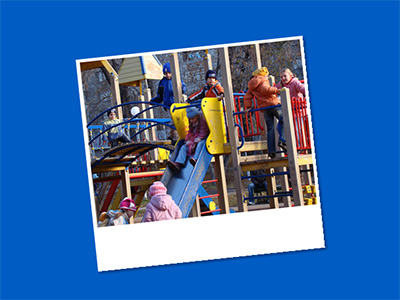 |
Course 17: Developing and Implementing Effective School-Age Outdoor Environments and Interest Areas |
2.00 |
School-age children need daily opportunities to exercise, relax, and participate in a wide range of outdoor activities. The hours children spend in after school programs are often the best hours of the day for getting fresh air and enjoying the out of doors while it is still daylight. School-age programs can provide safe, secure settings where children can enjoy the out of doors. Even if outdoor space is limited, regular participation in a wide variety of physical activities in the open air can help children develop healthy exercise habits that will last a lifetime. |
 |
Developing Effective Outdoor Environments and Interest Areas (Collection) |
2.00 |
School-age children need daily opportunities to exercise, relax, and participate in a wide range of outdoor activities. The hours children spend in after school programs are often the best hours of the day for getting fresh air and enjoying the out of doors while it is still daylight. School-age programs can provide safe, secure settings where children can enjoy the out of doors. Even if outdoor space is limited, regular participation in a wide variety of physical activities in the open air can help children develop healthy exercise habits that will last a lifetime. |
 |
Course 28: Commitment to Quality in School-Age Programs |
2.00 |
School-age child care programs were prevalent during World War II. Many mothers worked outside the home to support the war effort and needed care for their children. When the war ended, school-age child care programs disappeared almost overnight as mother chose to stay at home. School-age programs emerged again in the late 1960’s in response to the vast numbers of mothers across the nation who were re-entering the workforce. National surveys in the 1970’s indicated that at least two-thirds of mothers with school-age children were again employed outside the home. The divorce rate was increasing as well as the number of households headed by a single parent. As a result, many elementary school children spent hours alone from 3:00 to 6:00 when school was out. Clearly, there was a growing need for out-of-school support services for school-age children.
In the 1970’s programs were commonly known as school-age child care or extended day programs. Those establishing programs gave their attention to increasing the availability and affordability of after school services for working parents. By the mid 1970’s, child care advocates also emphasized the importance of providing quality programs. Child care advocates, parents, educators, public policy experts, and representatives from a wide variety of child care and community organizations began a national dialogue to explore and identify the components of quality school-age child care services. Today, national, state, and local organizations are working to educate the public about quality school-age child care services and assist school-age child care professionals achieve quality programming in their communities.
It is essential for OST professionals to be aware of the national and state organizations, research, and practices that focus on the development of quality school-age child care programs. This makes it possible for OST professionals around the country to learn about the dimensions of quality OST/SACC programs and participate in the important process of continuous improvement of their own programs. |
 |
Peer Mentoring for K-12 Staff |
1.00 |
School staff are all professionals. As a result, many can benefit from peer mentoring. When mentoring other staff with head and heart, everyone feels respected and valued. It is important to understand when mentoring is appropriate versus coaching, and the qualities of staff that make them a good candidate to receive mentoring or to be a mentor themselves. |
 |
Food Safety Practices (CDA 1) |
2.00 |
Safeguarding young minds and bodies is paramount in child care, and food safety plays a crucial role. This course empowers both center and home-based practitioners with vital knowledge and skills to combat foodborne illness (FBI), prevent choking hazards, and minimize other food-related injuries. Discover comprehensive guidelines for implementing effective food safety practices, ensuring you cultivate a healthy and secure environment for every child entrusted to your care. |
 |
ROAR: How to Build a Resilient Organization the World-Famous San Diego Zoo Way |
0.75 |
Roar: How to Build a Resilient Organization the World-Famous San Diego Zoo Way shows leaders at any level how to unleash the full potential of their teams to create lasting organizational resiliency rivaling that of the world-famous San Diego Zoo. It will show how the Zoo’s operating organization, San Diego Zoo Global, has utilized a set of innovative programs to create its team of exceptional leaders and engaged employees who have engendered its amazing accomplishments.
Featuring real-world stories, best practices, and specific strategies based on 100 years of exceptional leadership, this unique and valuable resource will help organizations of any size and focus to master winds of change, overcome stress and adversity, thrive in times of chaos, and constant in pursuit of their vision, and accomplish extraordinary things. |
 |
Risk Management Framework (RMF) DoD/IC Implementation 2022 |
24.00 |
Risk Management Framework (RMF) for DoD/IC Implementation 2022 focuses on the Risk Management Framework prescribed by NIST Standards and guided by DoD Instructions. This course is current as of May 2022. It was revised due to NIST producing new and updated publications over the preceding two years, including NIST Special Publication (SP) 800-37 R2; SP-800-53 R5; SP 800-53A R5; SP 800-53B; SP 800-160, versions 1 and 2; SP 800-171 R1 (among others); and various DoD updates to Instructions and guidance documentation. |
 |
Building Upward: Resuscitation of Anaphylactic Shock Part 1—Overview |
1.00 |
Retired ALS provider, Michelle Cerone, speaks with Dr. Jeremy Cushman about the recognition and treatment of anaphylactic shock. This discussion gives the BLS provider the opportunity to compare allergic reactions to the life-threatening condition that requires rapid intervention. Final Exam: Please read each question carefully. You will have two attempts to gain a 70% or higher on this exam. If you are not successful in two attempts, you are welcome to take the course again to gain the certification. |
 |
Communicating with Families for Paraprofessionals |
1.00 |
Research shows that family involvement in schools can improve family engagement with student learning and develop better relationships between families and children. Another benefit of increased family communication with schools is that it can improve student outcomes, including behavior, health, and school success. Paraprofessionals play a critical role in the communication between schools and parents. To be a good communicator, paraprofessionals need to understand the components of communication, and how the communication process works. |
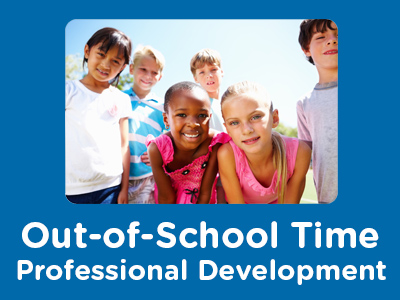 |
Providing Homework Support: Developing a Homework Support Program |
1.00 |
Research indicates there are many different ways to provide effective homework support in school-age programs. When planning a homework support program, it is important for school-age programs to develop a homework philosophy that is consistent with the program’s overall philosophy, and reflects current research on best practices for providing homework help. The homework philosophy should also reflect the needs of parents and children in the program, and strike a balance between homework needs and other experiences that help children grow and learn out-of-school. In this course, we will examine how to develop a homework support program. |
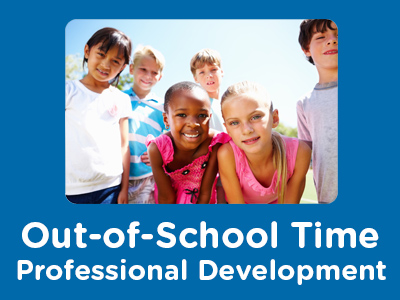 |
Providing Homework Support: Types of Homework Support |
1.00 |
Research indicates there are many different ways to provide effective homework support in school-age programs. When planning a homework support program, it is important for school-age programs to develop a homework philosophy that is consistent with the program’s overall philosophy, and reflects current research on best practices for providing homework help. The homework philosophy should also reflect the needs of parents and children in the program, and strike a balance between homework needs and other experiences that help children grow and learn out-of-school. In this course, we will explore the various types of homework support. |
 |
Human Relations Skill Development: Leadership Styles and Conflict Management for Paraprofessionals |
1.50 |
Research indicates that those in positions of leadership use a variety of different leadership and management styles. A person’s effectiveness as a leader is often directly linked to their leadership style. It is important for paraprofessionals to be aware of the assumptions and characteristics of different leadership styles. Knowledge of different leadership styles can help paraprofessionals reflect on their own leadership style, and assess its effectiveness. It can also help paraprofessionals take a proactive approach to applying different leadership styles and techniques, depending on the situation.
Leaders also use a variety of different styles when it comes to managing and resolving conflicts. By understanding how to diagnose the causes and dynamics of conflict, and understanding the characteristics of different conflict management styles, paraprofessionals can choose the best conflict management strategy for each situation. |
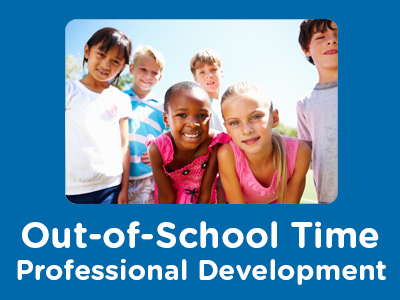 |
Human Relations Skill Development: Focus on Leadership Styles and Conflict Management: Managing Conflict |
1.00 |
Research indicates that those in positions of leadership use a variety of different leadership and management styles. A person’s effectiveness as a leader is often directly linked to his or her leadership style. It is important for school-age care professionals to be aware of the assumptions and characteristics of different leadership styles. Knowledge of different leadership styles can help school-age care professionals reflect on their own leadership style, and assess its effectiveness. Leaders also use a variety of different styles when it comes to managing and resolving conflicts. By understanding how to diagnose the causes and dynamics of conflict, and understanding the characteristics of different conflict management styles, school-age care professionals can choose the best conflict management strategy for each situation. |
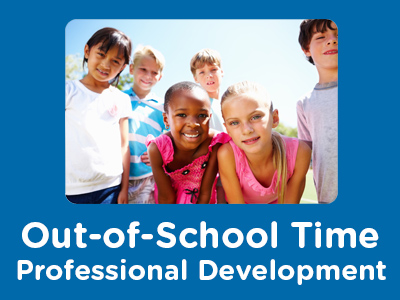 |
Human Relations Skill Development: Leadership Styles and Conflict Management: Leadership Styles |
1.00 |
Research indicates that those in positions of leadership use a variety of different leadership and management styles. A person’s effectiveness as a leader is often directly linked to his or her leadership style. It is important for school-age care professionals to be aware of the assumptions and characteristics of different leadership styles. Knowledge of different leadership styles can help school-age care professionals reflect on their own leadership style, and assess its effectiveness. |
 |
Human Relations Skill Development: Focus on Leadership Styles and Conflict Management (Collection) |
2.00 |
Research indicates that those in positions of leadership use a variety of different leadership and management styles. A person’s effectiveness as a leader is often directly linked to his or her leadership style. It is important for OST professionals to be aware of the assumptions and characteristics of different leadership styles. Knowledge of different leadership styles can help OST professionals reflect on their own leadership style and assess its effectiveness. It can also help OST professionals take a proactive approach to applying different leadership styles and techniques, depending on the situation.
Leaders also use a variety of different styles when it comes to managing and resolving conflicts. By understanding how to diagnose the causes and dynamics of conflict and understanding the characteristics of different conflict management styles, OST professionals can choose the best conflict management strategy for each situation.
There are a number of skills that enhance the ability of OST professionals to employ different leadership and conflict management styles effectively. When OST professionals are aware of these skills and their own skill levels, they can set priorities for ongoing development of leadership skills. |
 |
Course 26: Human Relations Skill Development: Focus on Leadership Styles and Conflict Management |
2.00 |
Research indicates that those in positions of leadership use a variety of different leadership and management styles. A person’s effectiveness as a leader is often directly linked to his or her leadership style. It is important for OST professionals to be aware of the assumptions and characteristics of different leadership styles. Knowledge of different leadership styles can help OST professionals reflect on their own leadership style and assess its effectiveness. It can also help OST professionals take a proactive approach to applying different leadership styles and techniques, depending on the situation.
Leaders also use a variety of different styles when it comes to managing and resolving conflicts. By understanding how to diagnose the causes and dynamics of conflict and understanding the characteristics of different conflict management styles, OST professionals can choose the best conflict management strategy for each situation.
There are a number of skills that enhance the ability of OST professionals to employ different leadership and conflict management styles effectively. When OST professionals are aware of these skills and their own skill levels, they can set priorities for ongoing development of leadership skills. |
 |
Human Relations Skill Development: Focus on Leadership Styles and Conflict Management |
2.00 |
Research indicates that those in positions of leadership use a variety of different leadership and management styles. A person’s effectiveness as a leader is often directly linked to his or her leadership style. It is important for OST professionals to be aware of the assumptions and characteristics of different leadership styles. Knowledge of different leadership styles can help OST professionals reflect on their own leadership style and assess its effectiveness. It can also help OST professionals take a proactive approach to applying different leadership styles and techniques, depending on the situation.
Leaders also use a variety of different styles when it comes to managing and resolving conflicts. By understanding how to diagnose the causes and dynamics of conflict and understanding the characteristics of different conflict management styles, OST professionals can choose the best conflict management strategy for each situation.
There are a number of skills that enhance the ability of OST professionals to employ different leadership and conflict management styles effectively. When OST professionals are aware of these skills and their own skill levels, they can set priorities for ongoing development of leadership skills. |
 |
Observation and Assessment of the Learning Environment (CDA 7) |
2.00 |
Research finds that the quality of a child’s early learning environment has a significant impact on his well-being and ability to learn. This course focuses on two significant aspects of environmental quality: the relationships and rich interactions that happen in the classroom, and the physical setting and learning materials. Special emphasis is placed on observation and assessment of the learning environment to make improvements and support positive outcomes for children. The course covers how professionals who work with young children can use observation and assessment as a way to support children’s development (social, emotional, cognitive, physical, and approaches to learning), inform teaching practices, enhance interactions with children, and plan activities for young children. This course is designed to be part of a Child Development Associate (CDA) Credential™ curriculum, and covers CDA subject area 7: Observation and Assessment. It can also be taken as a stand-alone learning event or as part of a broader early childhood education curriculum. |
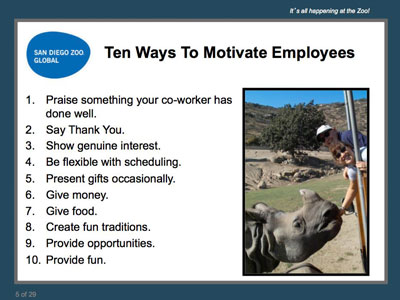 |
Roaring Rewards: Creating a World Famous Employee Recognition Program |
1.00 |
Recognizing employees for hard work is an essential component to employee loyalty and a contributing factor to healthy workplace morale. Some employers go to great lengths to come up with recognition programs while others rely on the conventional method of simply praising employees for a job well done. There are a number of reasons you can choose to recognize employees and a number of ways to create an awards program. Take an inside look at how the world famous San Diego Zoo has truly established itself as an employer of choice with its innovative and robust "Roaring Rewards" employee recognition program. |


























